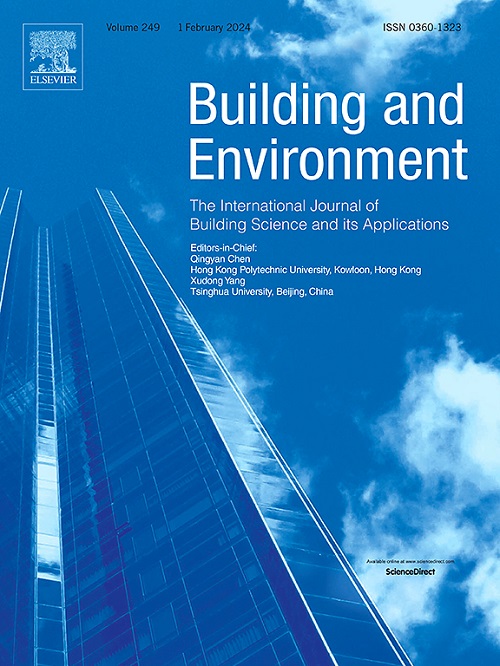预测马来西亚空调办公室个人热舒适度的机器学习方法
IF 7.1
1区 工程技术
Q1 CONSTRUCTION & BUILDING TECHNOLOGY
引用次数: 0
摘要
现有的基于机器学习的个人热舒适度模型传统上侧重于居住者的生理和心理变化,空间参数在很大程度上被忽视。本研究通过实地测量收集数据,并综合集体研究结果,得出基于 24 °C 设定点的最佳空间定位。本研究旨在调查和比较机器学习模型使用非空间参数(NSP)和空间参数(SP)对空调办公环境中个人室内热舒适度的预测性能。数据收集自四个不同居住者的受访者。NSP 和 SP 的综合数据集由机器学习模型(决策树 (DT)、随机森林 (RF)、支持向量机 (SVM)、K-近邻 (KNN)、Naive Bayes (NB) 和神经网络 (NN) 等)组成,用于预测不同的热舒适度情况。结果表明,随机森林算法比其他算法的预测准确率有了大幅提高,在使用空间参数进行热感投票(TSV)时,总体准确率提高了 38.6%。然而,SVM 算法在考虑热舒适度(TC)的 SP 输入后,准确率提高了 50%。空间参数,包括窗户和空调设备之间的距离,成为影响热舒适度的关键因素。本文章由计算机程序翻译,如有差异,请以英文原文为准。
Machine learning approach for predicting personal thermal comfort in air conditioning offices in Malaysia
The existing machine learning based models for personal thermal comfort have traditionally focused on physiological and psychological variations among occupants, and the spatial parameters have been largely overlooked. Field measurements are conducted to collect data and synthesise the collective findings for optimal spatial positioning based on a 24 °C setpoint. The objective of the present study is to investigate and compare the prediction performance made by the machine learning models for personal indoor thermal comfort in air-conditioned office environments using non-spatial parameters (NSP) and spatial parameters (SP). The data was collected from the respondents at four different occupants. A comprehensive data set of NSP and SP is comprised of machine learning models in predicting different thermal comfort situations are Decision Trees (DT), Random Forests (RF), Support Vector Machines (SVM), K-Nearest Neighbours (KNN), Naive Bayes (NB), and Neural Networks (NN). Results indicate a substantial improvement in the accuracy prediction with the Random Forest algorithm outperforming others, enhancing overall accuracy by 38.6 % with spatial parameters for thermal sensation vote (TSV). However, the SVM algorithm improves 50 % accuracy by considering SP input for thermal comfort (TC). Spatial parameters, including the distance between windows and air conditioning units, emerge as critical factors influencing thermal comfort.
求助全文
通过发布文献求助,成功后即可免费获取论文全文。
去求助
来源期刊

Building and Environment
工程技术-工程:环境
CiteScore
12.50
自引率
23.00%
发文量
1130
审稿时长
27 days
期刊介绍:
Building and Environment, an international journal, is dedicated to publishing original research papers, comprehensive review articles, editorials, and short communications in the fields of building science, urban physics, and human interaction with the indoor and outdoor built environment. The journal emphasizes innovative technologies and knowledge verified through measurement and analysis. It covers environmental performance across various spatial scales, from cities and communities to buildings and systems, fostering collaborative, multi-disciplinary research with broader significance.
 求助内容:
求助内容: 应助结果提醒方式:
应助结果提醒方式:


